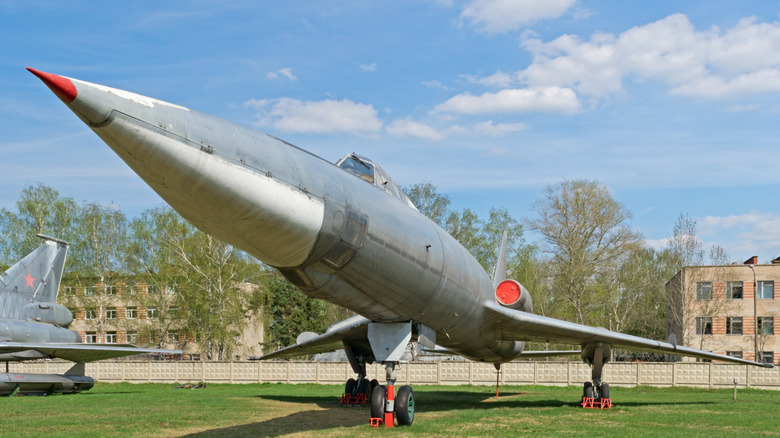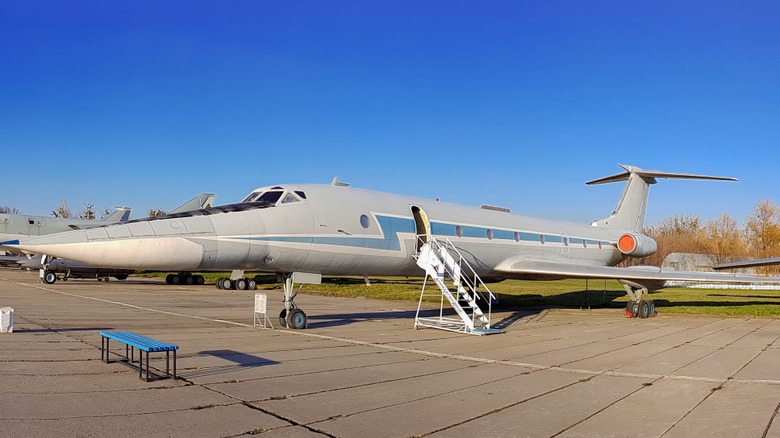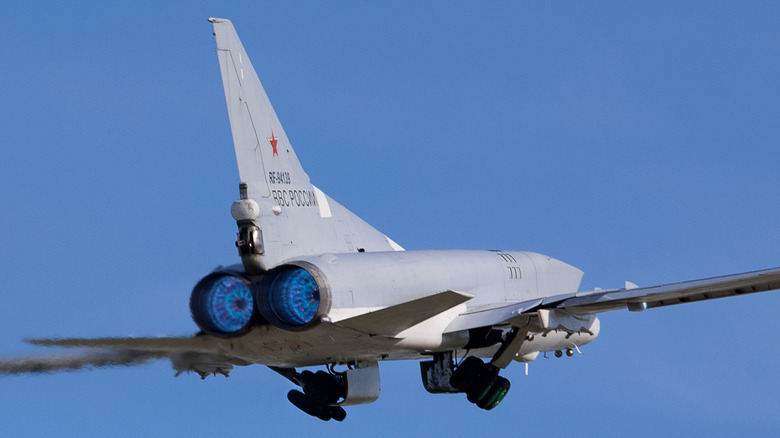The Booze Carrier: The Story Of The Vodka-Cooled Soviet Jet
We may receive a commission on purchases made from links.
The history of Soviet era weapons and warfare is brimming with interesting tales of success, failure, and weird human behavior. The MiG-25 had to be flown within limits because, at its top speed exceeding the Mach 3 level, the engines would blow up. The Sukhoi-25's engineering is so resilient that even after sustaining damage during combat, it can return to base. The famed Tsar Tank, which had wheels as massive as 9 meters in height, failed because it kept getting stuck in the ground. Even Soviet cosmonauts had to carry a TP-82 "space gun" in their kit to protect themselves from wild animals after landing in Siberia. The Tupolev Tu-22, regarded as the first Soviet supersonic bomber, has somewhat of a tipsy reputation attached to it.
7 September 1959. First flight of the Tupolev Tu-22 'Blinder', first supersonic bomber to enter production in the Soviet Union. pic.twitter.com/nBkEUuCCGs
— Ron Eisele (@ron_eisele) September 6, 2022
The supersonic bomber, which went by the NATO designation of Blinder, also attracted a rather curious nickname of "Booze Carrier." A few other anecdotal accounts refer to it as "Flying Liquor Store" and "Vodka Truck." Now, just to clear things up, this fighter jet was not actually used to transport alcoholic beverages during warfare. That moniker has more to do with a curious engineering decision that involved highly concentrated alcohol as a cooling agent. Specifically, the coolant liquid had only two components, with ethyl alcohol (or ethanol) making 40% of it, while the rest was distilled water. If that sounds familiar, well, that's because the alcohol content in vodka is usually 40% or higher. And it seems pilots actually drank some of this alcohol-heavy coolant.
Why was alcohol used on the Tu-22?
The Tu-22, which featured an all-metal aluminum fuselage and had space for three crew members, was powered by a single duct turbob-oosted RD-7 engine. In their book Tupoleve: The Man And His Aircraft, Paul Duffy and Andrei Kandalov mention that the most unusual aspect of the Tu-22 was that its engines were "mounted over the rear fuselage on either side of the tail." With turbojet engines, you need a bleed air system that releases extremely hot air from the engine's compressor section.
A U.S. Navy McDonnell Douglas F-4N Phantom II from Fighter Squadron VF-51 Screaming Eagles intercepts a Soviet-built Egyptian Tupolev Tu-22 "Blinder" over the Mediterranean Sea, circa in April 1977. U.S. Navy. pic.twitter.com/cYIijZvHHD
— J.J. (@kadonkey) May 2, 2022
This air must be cooled, either by passing it through ducts or by using a refrigerant. This air is crucial for maintaining cabin pressure, especially when flying at high speeds. In the case of the Tu-22, the air pressurization was under particular stress because it was tied to the survival of not just the pilot, but also the navigator and the weapons operator in the cabin. For the Tu-22, the engineers developed a cooling system that relied on an alcoholic liquid consisting of 40% alcohol and 60% distilled water. When hot air passed through the evaporator placed in the refrigerant liquid, heat exchange took place and cooled down the air.
It's thermodynamics 101, where the state change of alcohol is accompanied by the conversion of heat energy, leading to the lowering of temperature. Now, the pilot can control the amount of hot air released by pressure-controlled valves sent for cooling, which means they also indirectly control the level of alcohol used as a refrigerant. This is where things get interesting with the Tu-22 and its infamy.
From cooling to boozing
When you can control the amount of hot air that is sent for cooling, you are also in control of the alcohol-based refrigerant that is left unused at the end of the flight. This is where the "Supersonic Booze Carrier" legend originates. Once the Tu-22 crew got off their supersonic bomber vehicle, they reportedly looked into the refrigerant tank and portions of the leftover coolant in the tank. "Unused alcohol mixture usually would be just drained off from the aircraft and then used either in a direct way—as a liquor drink or as a liquid currency," claims Paper Skies.
In another video shared by the channel "Not What You Think," there are some images and video assets where Soviet pilots are supposedly seen sipping on the alcohol-heavy refrigerant liquid from the Tu-22. In addition to drinking the alcohol, it was supposedly also sold as an informal form of currency. In fact, the practice continues to date, especially in the face of a falling Ruble.
"People keep vodka in stock to use as liquid currency," a Russian clerk working in a laboratory was quoted as saying by The Baltimore Sun. "I have more than 20 bottles at home, and I don't drink at all." As for the Tu-22, it was deemed a failure. The bomber was difficult to fly and suffered from turbulence, bad visibility, and landing issues. Multiple variations were developed over the years, but it could never become as successful as other Soviet jets like the MiG series.


